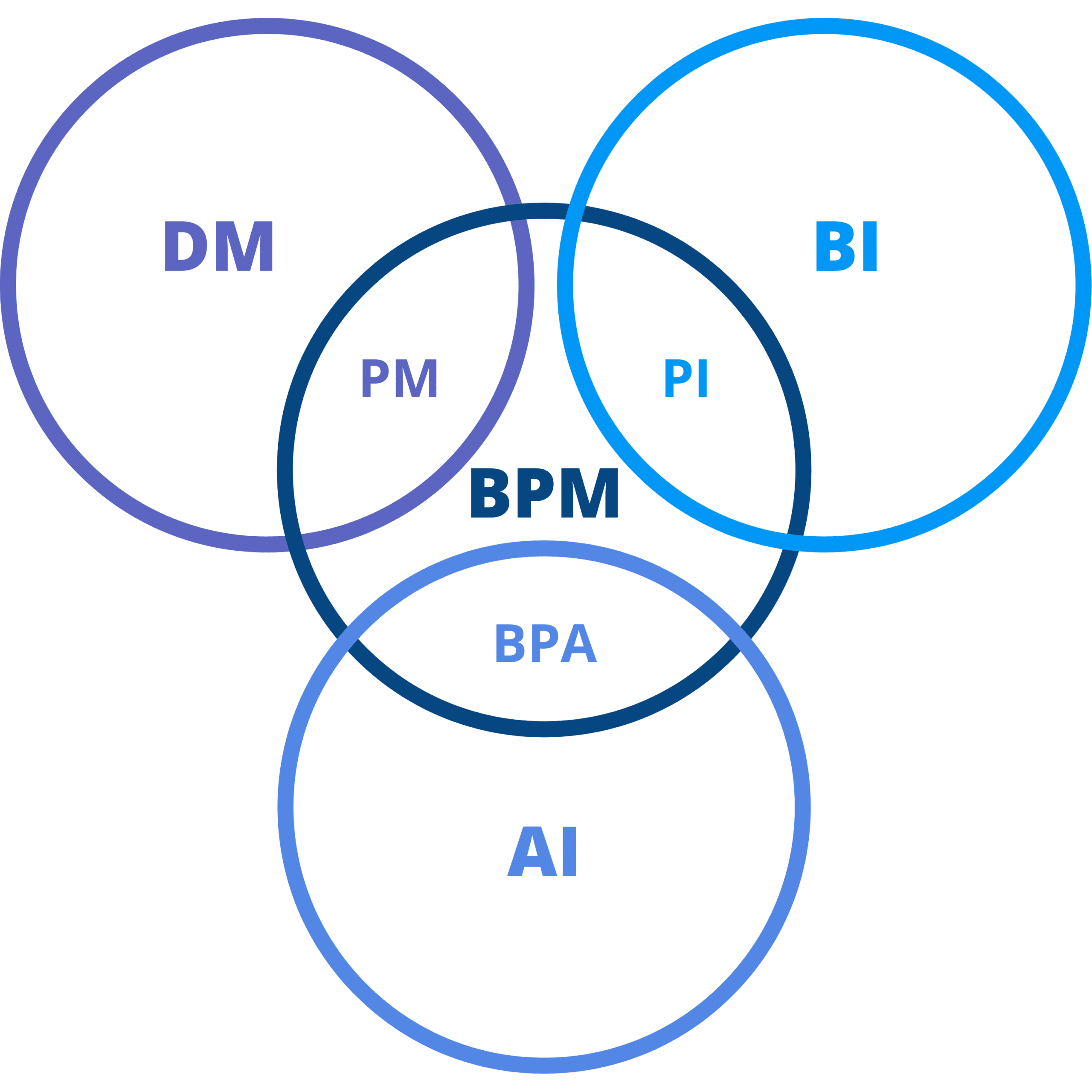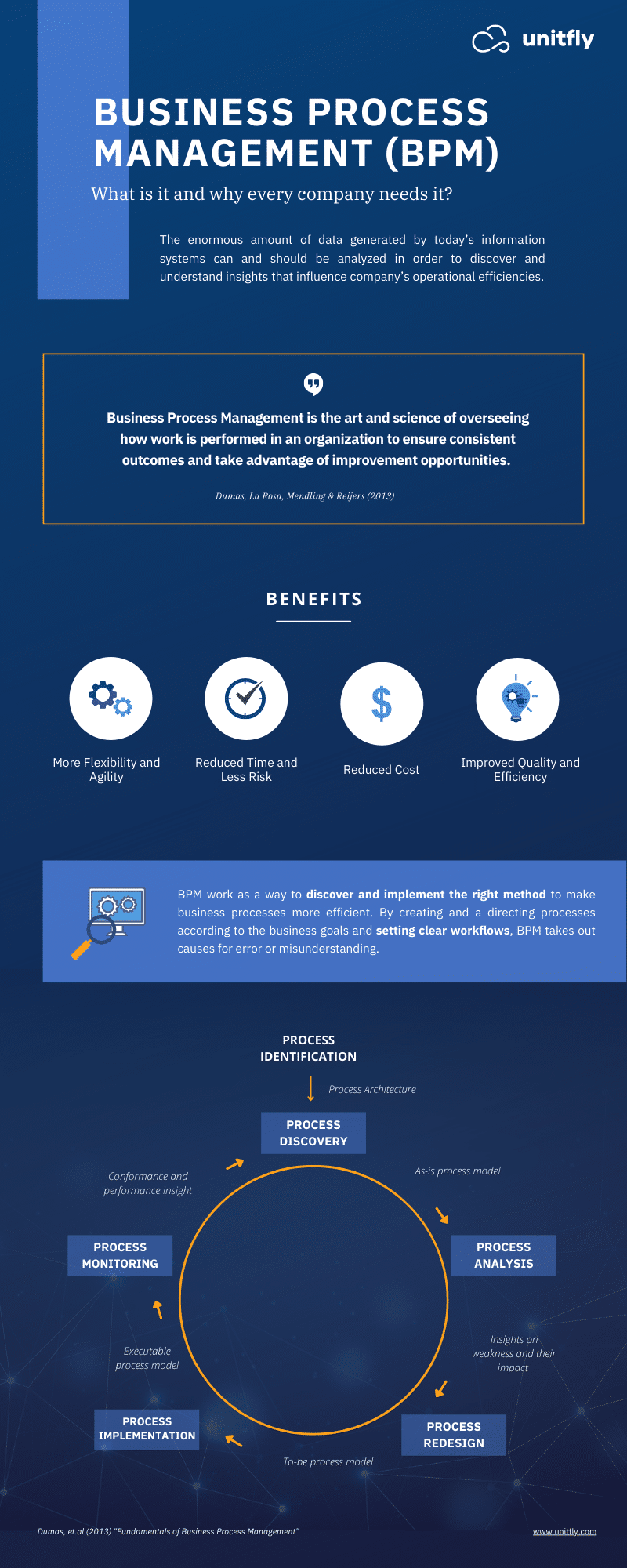
What is Business Process Management – Definition, Types, Steps [+Infographic]
Busines Process Management has become a hot topic in the information management world. And for a good reason. Every company starting their digital transformation journey should incorporate BPM, no matter the size of business. Here’s a guide to what Business Process Management is and why every company needs it.
Business Process Management (BPM) is a method of discovering, analyzing and improving organization’s processes. It is a field that offers value in any type of organization and for many different purposes. Regardless, the outcome is always the same – acquiring knowledge about a process.
BPM is the art and science of overseeing how work is performed in an organization to ensure consistent outcomes and take advantage of improvement opportunities.
The outcome of the analysis are insights that shows us how processes behave. It reveals the existence of bottlenecks and room for improvement. With these insights, we are able to improve a process and monitor it.
BPM – a foundation for every organization
BPM combines knowledge of information technology with management sciences and applies it to operational business processes. What makes BPM a widely used discipline gaining popularity every day is the ability to be implemented in any domain. Every organization bases its business on organized processes. Since every product is created, developed, and produced in a specific flow, BPM is vital to inspect those processes. As a result, organizations are able to improve their performance – reduce time spent working on a specific product and decrease the risk of uncompleted or unsuccessful processes. Furthermore, efficiency increase, increments’ growth and gaining more satisfied customers is what BPM could give to the process and its organization. The reasons for implementing BPM are numerous, and outcomes even greater.
The outcomes of Business Process Management
- Business and Process Understanding
The goal of BPM is to understand the processes and make them more efficient and agile. In order to do that, the first step is to understand the quantity and quality of the business processes and break them down into steps to optimize them for maximum efficiency.
- Process Awareness
Good process awareness is an important condition for the success of business processes as it assures that the people know their roles and contributions in the workflows. The higher the process awareness, the deeper the engagement into the process, therefore the better the result.
- Process Management
BPM enables companies to analyze processes, identify and remove bottlenecks and unnecessary steps, and afterwards, to keep track of the efficiency of processes, and optimize if necessary.
- Process Measurability
Setting measurable objectives is a prerequisite of process analysis, monitoring and optimizing and essential for a proper execution of a process. Monitoring and evaluating process efficiency is the ground for building a measurement system to ensure a successful business growth.
Five steps of Business Process Management
Business process management consists of five steps – process discovery, analysis, redesign, implementation and monitoring processes. Because these five aspects are broad, they are developing into their own fields within the discipline. By creating collaboration with other disciplines and their fields, unique aspects of BPM emerged:
Areas emerged from Business Process Management
In the picture below, we present a Venn diagrams that contain BPM as the foundation discipline for new areas.

Process Intelligence (PI) is a field that emerged from an intersection between BPM and Business Intelligence (BI), as a reporting aspect on a process. Using BI techniques for analyzing and creating reports, we are focusing on processes and analyzing their performances in the reports.
Process Mining (PM) became very popular in the recent years when Data Mining (DM) started to produce algorithms to interpret event logs of processes. By combining the Computer Science mechanism of understanding events, patterns of events’ occurrence and their performance, Process Mining is giving insights into both process discovery and analysis. Lastly, with Artificial Intelligence (AI) development, BPM got a new perspective on optimizing the process by automating its specific components, called Business Process Automation (BPA). This means that by using intelligence from earlier discoveries of Process Intelligence and Process Mining, we can detect which stages could be automated. This intersection between BPM and AI allows us to work on process improvement.
Related articles:
Why every company should implement Process Mining
Business Process Intelligence – the key to effective workflows
How does Decision-Making Process work
Business Process Management has become a core solution for improving processes. By adding other three perspectives (PI, PM, and BPA), all aspects of discovering, analysis, monitoring, and optimization are covered. It is a starting point for digital transformation, becoming an invaluable asset for the growth of businesses of any size and type. Let’s talk about how business process management can help your business!
Take a look at the infographic below:




